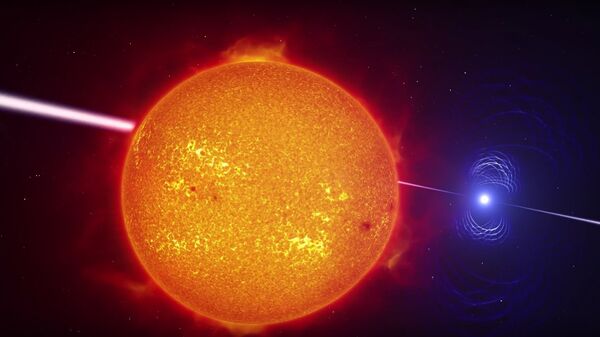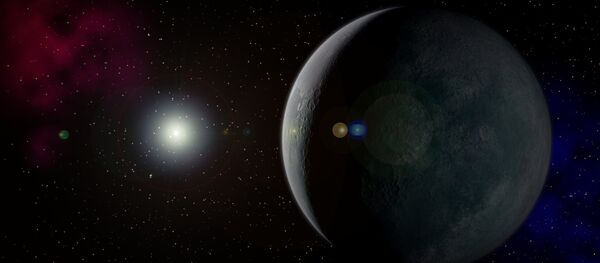Using a range of telescopes, including Hubble and the Very Large Telescope, amateur astronomers teamed up with professionals to show that AR Scorpii is actually not one, but two stars.
"AR Scorpii was discovered over 40 years ago, but its true nature was not suspected until we started observing it in 2015," Tom Marsh, an expert from the University of Warwick in England and a lead author of a new study said in a statement. "We realized we were seeing something extraordinary within minutes of starting the observations."
New findings, published Wednesday in the journal Nature, showed that the system is made up of a white dwarf that has similar dimension to Earth but is 200,000 times more massive, and a red dwarf, which is one-third the size of our Sun. The white star rapidly spins around its neighbor and lashes it with radiation, comparable to a lighthouse beam. The pulse of electromagnetic radiation is so intense that it causes the red dwarf to flicker.
According to the astronomers, such a unique behavior of the binary star system has never been observed before.
"It's very exciting that we have discovered such a system, and it has been a fantastic example of amateur astronomers and academics working together," co-author Boris Gänsicke said in the statement.



